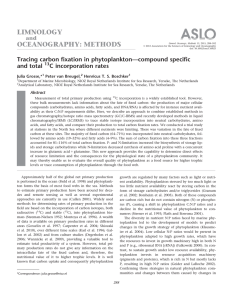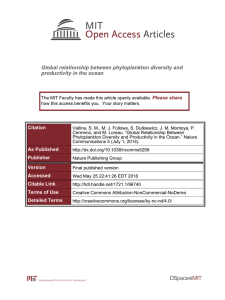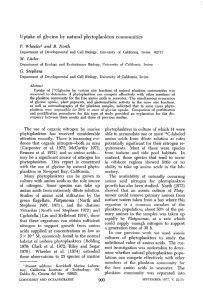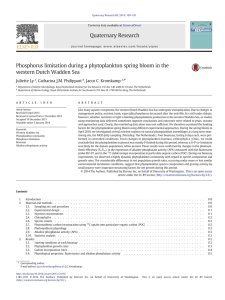Assessing the effects of resource limitation in North Sea
advertisement
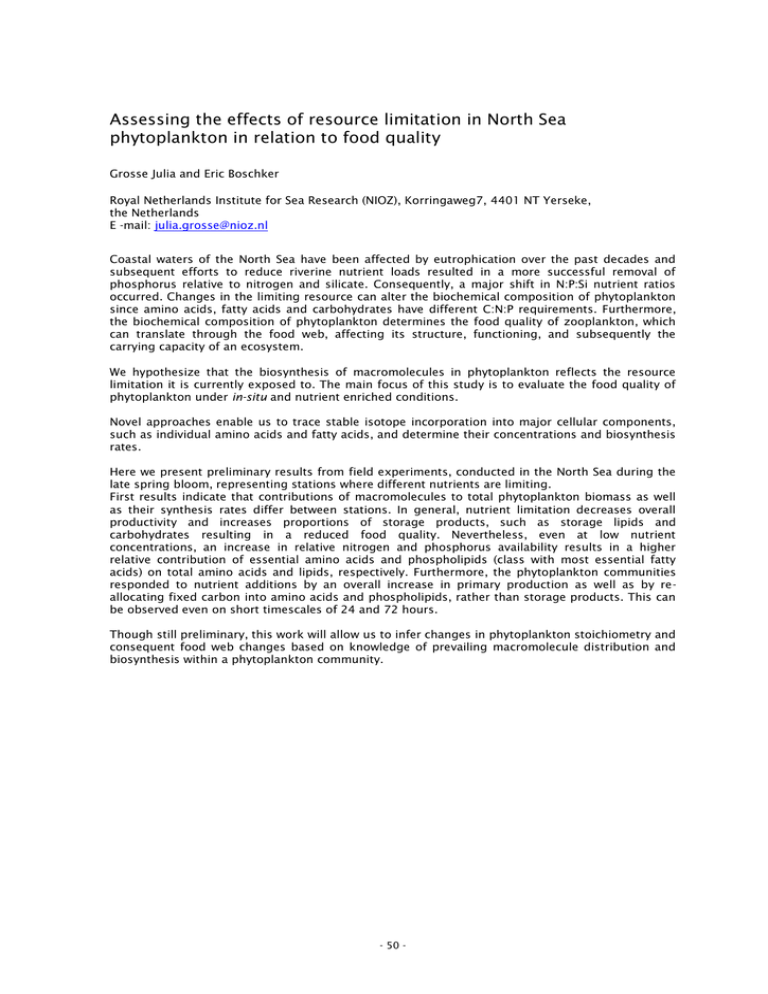
Assessing the effects of resource limitation in North Sea phytoplankton in relation to food quality Grosse Julia and Eric Boschker Royal Netherlands Institute for Sea Research (NIOZ), Korringaweg7, 4401 NT Yerseke, the Netherlands E -mail: julia.grosse@nioz.nl Coastal waters of the North Sea have been affected by eutrophication over the past decades and subsequent efforts to reduce riverine nutrient loads resulted in a more successful removal of phosphorus relative to nitrogen and silicate. Consequently, a major shift in N:P:Si nutrient ratios occurred. Changes in the limiting resource can alter the biochemical composition of phytoplankton since amino acids, fatty acids and carbohydrates have different C:N:P requirements. Furthermore, the biochemical composition of phytoplankton determines the food quality of zooplankton, which can translate through the food web, affecting its structure, functioning, and subsequently the carrying capacity of an ecosystem. We hypothesize that the biosynthesis of macromolecules in phytoplankton reflects the resource limitation it is currently exposed to. The main focus of this study is to evaluate the food quality of phytoplankton under in-situ and nutrient enriched conditions. Novel approaches enable us to trace stable isotope incorporation into major cellular components, such as individual amino acids and fatty acids, and determine their concentrations and biosynthesis rates. Here we present preliminary results from field experiments, conducted in the North Sea during the late spring bloom, representing stations where different nutrients are limiting. First results indicate that contributions of macromolecules to total phytoplankton biomass as well as their synthesis rates differ between stations. In general, nutrient limitation decreases overall productivity and increases proportions of storage products, such as storage lipids and carbohydrates resulting in a reduced food quality. Nevertheless, even at low nutrient concentrations, an increase in relative nitrogen and phosphorus availability results in a higher relative contribution of essential amino acids and phospholipids (class with most essential fatty acids) on total amino acids and lipids, respectively. Furthermore, the phytoplankton communities responded to nutrient additions by an overall increase in primary production as well as by reallocating fixed carbon into amino acids and phospholipids, rather than storage products. This can be observed even on short timescales of 24 and 72 hours. Though still preliminary, this work will allow us to infer changes in phytoplankton stoichiometry and consequent food web changes based on knowledge of prevailing macromolecule distribution and biosynthesis within a phytoplankton community. - 50 -





